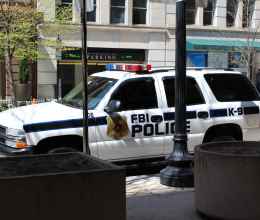By Jennie Pasquarella and Kate Desormeau
The tragic shooting of Kate Steinle in San Francisco has focused national attention on why her accused assailant, Francisco Lopez-Sanchez, was released from the San Francisco Sheriff’s Department’s custody in April and not deported. U.S. Immigration and Customs Enforcement and others have rushed to cast blame on the sheriff’s department for Steinle’s death. But this horrible and apparently random act of violence shouldn’t be used to push a political agenda.
Did something go wrong here? Yes. But San Francisco’s policies are not to blame for this tragedy.
Although we don’t yet have all the facts, we do know that this case was unusual. Until late March, Lopez-Sanchez was in federal custody, serving a prison sentence that normally would have ended with deportation. His sentence apparently should have ended in July 2013, but for reasons we don’t yet understand, ICE did not deport him — then or at any time over the next year and 8 months, when Lopez-Sanchez inexplicably remained in federal custody. Finally, in March 2015, the federal Bureau of Prisons sent him to San Francisco based on a 20-year-old warrant for a marijuana charge — a charge that San Francisco predictably decided not to pursue because it was a low-level offense from two decades ago.
ICE now blames San Francisco for failing to notify ICE when that charge was dropped. But the sheriff says that what ICE sent was an immigration “detainer” — a form that asks for extended detention, which he could not enforce because it was not accompanied by a warrant. Under a 2013 city ordinance and a 2015 sheriff’s policy, the sheriff’s department does not imprison people based on ICE detainers alone. Rather, like many other jurisdictions around the country, the sheriff’s department requires a judicial warrant before it will imprison someone at ICE’s request. This is not a controversial position — multiple federal courts have found constitutional defects with ICE’s detainer practices. When Lopez-Sanchez’s time in local custody was done, there was no legal basis for San Francisco to hold him.
Also relevant here is a more recent 2015 sheriff’s policy, which declines to share certain information with ICE. Even ICE recognizes that localities are not required to respond to notification requests. And there are good reasons why San Francisco decided to keep its distance from ICE: The sheriff’s department depends on the trust of the whole community, including immigrants, in order to solve crimes and keep people safe. Drawing a bright line between the sheriff’s department and federal immigration authorities is critical to maintaining that trust. At any rate, if ICE had only wanted advance notice so it could reassume custody of Lopez-Sanchez when his local charge was resolved, an outdated, legally discredited ICE detainer form was the wrong tool to use.
How could the federal government have handled this differently? If ICE had presented the Sheriff’s Department with a judicial order authorizing detention, San Francisco could legally have kept Lopez-Sanchez in custody temporarily for ICE—and it would have done so, under its policies. But ICE didn’t do that.
So the question remains: Why did ICE use a detainer form that it knew San Francisco would not enforce — indeed a form that ICE itself has announced it will no longer use? Before policymakers rush to judgment, we need answers on what actually went wrong here.
Jennie Pasquarella is staff attorney at the ACLU of Southern California and Kate Desormeau is staff attorney at the ACLU Immigrants' Rights Project. Follow ACLU_SoCal.


